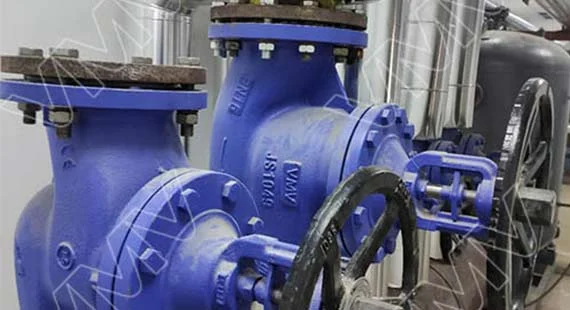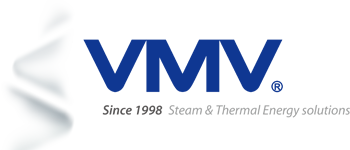Valves are a vital component of industrial systems. Ensuring their proper and safe operation is crucial to ensuring system efficiency and longevity. However, in actual use, both preventable and unpreventable accidents can occur unexpectedly, damaging valves and reducing their lifespan. Control valve cavitation is a common problem that can seriously impact valve performance and service life. Therefore, understanding the causes and potential dangers of cavitation can help us better extend the lifespan of control valves and enhance their value.

What is Valve Cavitation?
Valve cavitation is a complex and destructive physical phenomenon. When a liquid flows through a specific area of a valve, such as a throttling point or a sudden constriction or expansion in the flow path, its pressure drops dramatically. Once the pressure drops below the saturated vapor pressure of the liquid, it rapidly vaporizes, forming numerous tiny bubbles. These bubbles continue to flow with the liquid. When they enter a higher-pressure area, the surrounding high pressure makes them unstable and they quickly burst. At the moment of bubble collapse, the surrounding liquid rushes into the space previously occupied by the bubble at extremely high speed, generating a powerful shock wave with a force of hundreds or even thousands of atmospheres, accompanied by localized high temperatures. This high temperature and high pressure shock can severely damage the valve structure and materials, potentially causing vibration and noise in the piping system. Over time, this can lead to component degradation and make the piping system susceptible to serious damage.
Valve Cavitation Severity Levels
Stage 1: Mild Cavitation
A slight hissing or rustling sound, like fine sand flowing through the fluid, may be heard. This is the initial formation and collapse of bubbles. Very fine, frosted-like pitting erosion appears on the valve plug and seat sealing surfaces. At this stage, cavitation has little measurable effect on the valve’s flow characteristics and sealing performance. The valve continues to function normally.
Stage 2: Moderate Cavitation
The noise increases significantly, becoming a continuous, distinct “crackling” sound, similar to frying something. This is a sign of the violent collapse of numerous bubbles. Visible honeycomb or sponge-like pits appear on the valve plug and seat surfaces. The material surface becomes rough. The valve sealing surface is damaged, resulting in a loose seal when closed, leading to internal leakage. The valve’s CV value (flow coefficient) may change slightly.
Stage 3: Severe Cavitation
The noise is extremely loud, becoming a violent, explosive “boom” or “rattle,” accompanied by intense vibration. Valve trim (valve plug and seat) is severely eroded, forming large grooves and gaps. At this point, the valve loses its seal completely, and even when fully closed, significant fluid leakage occurs. Furthermore, precise flow control becomes impossible, adjustment linearity deteriorates, and the actuator may experience chatter.
Stage 4: Catastrophic Cavitation
The noise and vibration may subside suddenly, but more commonly, they are intense and catastrophic. The valve plug or seat is completely corroded or partially fractured due to insufficient strength. The energy from the high-speed jet and intense vibration can severely damage downstream piping, elbows, and equipment, causing thinning of downstream pipe walls, leaks, and even bursts. The valve completely loses its control function, and the system ceases to operate properly.
How to Prevent Valve Cavitation
Preventing valve cavitation requires a comprehensive, multi-faceted approach. Valve cavitation must be addressed at every stage, from manufacturer design to operator use.
1. Optimize Valve Selection and Design
Select valves with low pressure recovery coefficients: If process conditions permit, valves with low pressure recovery coefficients, such as ball valves and butterfly valves, should be preferred to reduce the risk of cavitation.
Use a multi-stage pressure-reducing structure: For operating conditions with excessively large pressure differentials, use multi-stage pressure-reducing valves or connect multiple valves in series to distribute the total pressure differential across multiple stages, ensuring that the pressure differential at each stage remains below the critical pressure differential for cavitation.
Optimize flow path design: Improve the internal flow path design of the valve to reduce pressure drop and flow velocity at the contraction point, thereby avoiding the formation of localized low-pressure areas.
2. Select cavitation-resistant materials
Use high-hardness materials: Cavitation damage is directly related to material hardness. A stainless steel substrate can be used, and high-hardness, erosion-resistant hardened surfaces such as Stellite can be overlayed or spray-welded in areas susceptible to impact.
Perform regular maintenance and repair: If the hardened surface is damaged, a secondary overlay or spray-welding procedure can be performed to extend the valve’s service life.
3. Improve System and Operating Conditions
Control Pressure Differential: Ensure the pressure differential across the valve is below the maximum allowable pressure differential for the medium at the inlet temperature to prevent the pressure from dropping below the saturated vapor pressure of the liquid.
Reduce Flow Rate: Limit the flow rate within the pipe by increasing the pipe diameter or adjusting the flow rate to an appropriate range to minimize surges and the formation of low-pressure areas.
Reduce Gas Ingress: Ensure the piping system is well sealed to prevent air ingress. Install a bleed device in the system to promptly expel dissolved air.
Optimize Operation: Avoid operating the valve under extreme operating conditions, such as excessive flow or sudden opening and closing operations. For self-operated regulating valves, ensure they operate in the “flow open” position.
Summary
If you want to select high-quality valves and fundamentally reduce the risk of valve cavitation, please contact us. Newton is not only a premium valve manufacturer, but also provides comprehensive solutions for steam and thermal energy systems to solve your valve problems.

